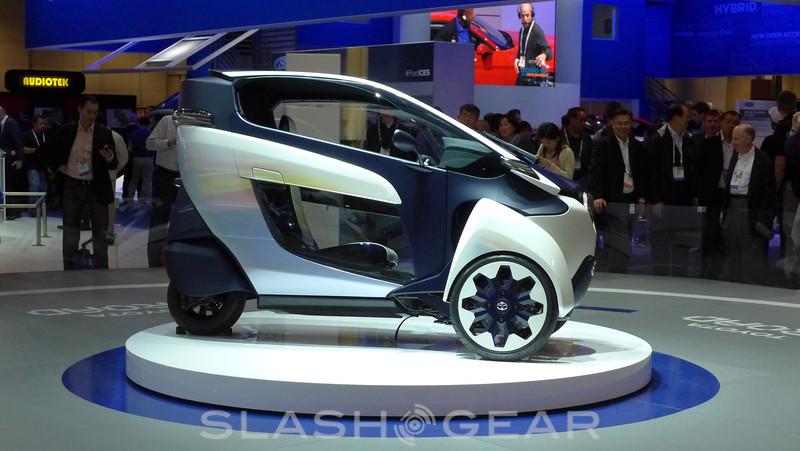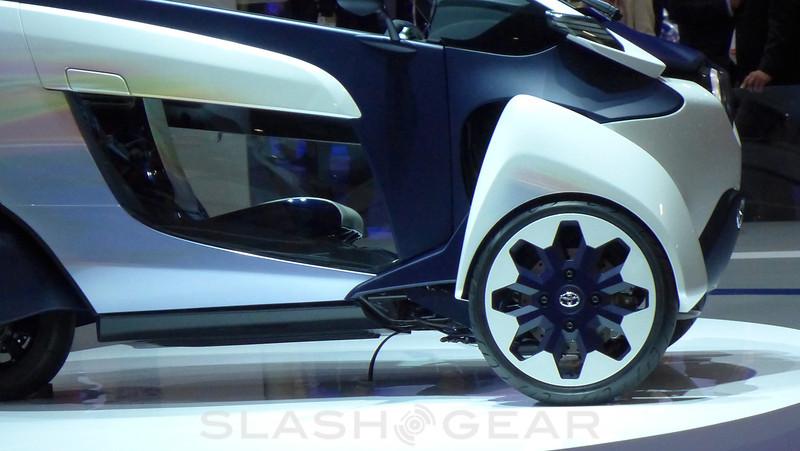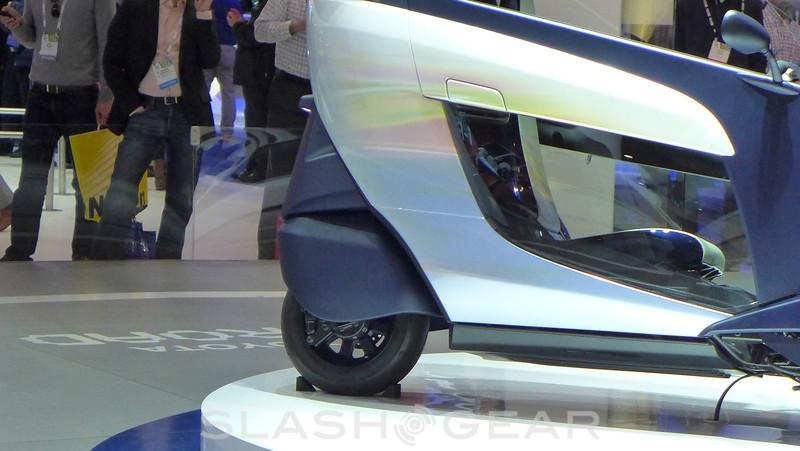Toyota I-Road First-Drive Experience
Toyota has been showing the i-Road three-wheel electric concept vehicle here at CES 2014. This may be the first time many have seen this concept, however it was actually introduced nearly a year earlier at the Geneva Auto Show in Tokyo, where SlashGear was first allowed to get behind the wheel. While it may only be a concept today, and one that's highly unlikely to make it to the US market, the technology and overall setup are still more than interesting as a leaning, all-EV approach to urban mobility. Read on for our full drive report!
The Toyota i-Road is a concept and so far we have been referring to it as a generic "vehicle": i-Road has a closed body similar to a car, however there are some items that bring comparison to a motorcycle. Or, for that matter, a fancier golf cart. The three-wheeler spans a few classifications, then, and so for the sake of argument moving forward concept vehicle seems to be the easiest term for description.
Toyota hasn't stinted on the technology: i-Road is compact, all-electric, zero-emission, nearly silent, and uses Active Lean technology. That last bit is where the comparison to the motorcycle comes in: Toyota describes it as being for automatic leaning during cornering. The front wheels compensate for changes in the road surface and as well as for turns. Watching the vehicle move, you can actually see the front wheel shifting as the i-Road is being driven.
Despite the motorcycle comparison, it should be made clear that you do not need to be comfortable on a motorcycle to be comfortable driving the i-Road. To that point, Toyota has said no specialized driving skills are required. The big benefit comes in with the license required to drive the i-Road; or more accurately, the lack of license, since because the speed of the i-Road is capped at 45km, just under 30mph, you don't need particular certification to get behind the controls.
At 2.78 feet wide by 7.7-feet long, as well as 4.74-feet tall and with a wheelbase of 5.57-feet, the i-Road is one of the smaller vehicles out there; it's dwarfed even by a Smart ForTwo. According to Toyota though, the key measurement is the width, which means the i-Road be able to provide motorcycle-like maneuverability. On top of the maneuverability, this also means the i-Road should be much easier to park when space is limited.
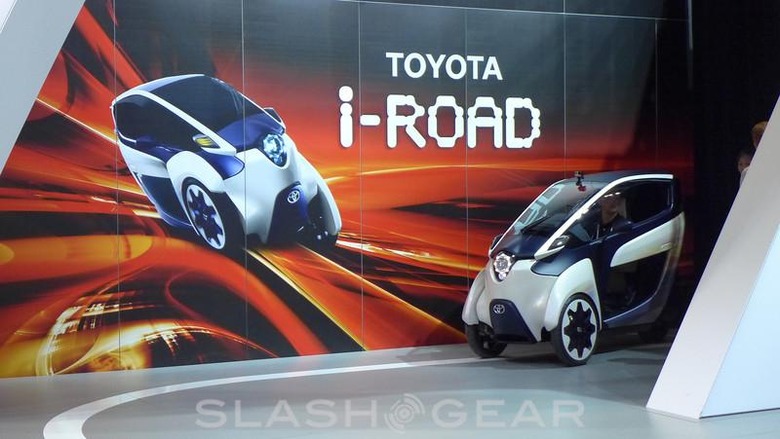
The other important part is that it's electric. This means zero-emission and a nearly-silent running experience. Toyota's setup here features an all-electric powertrain with a lithium-ion battery providing power to a pair of 2 kW electric motors mounted on the front within the front wheels. In addition to the power coming direct from the front wheels, the back wheel pivots which helps the i-Road make tighter turns.
Toyota claims that a full charge is good for a driving range of about 50km, which is just a little over 30 miles, though that depends on terrain and speed. The i-Road is also able to charge fully in just about three hours time. Perhaps key with the charging is that it's done using a standard household power outlet.
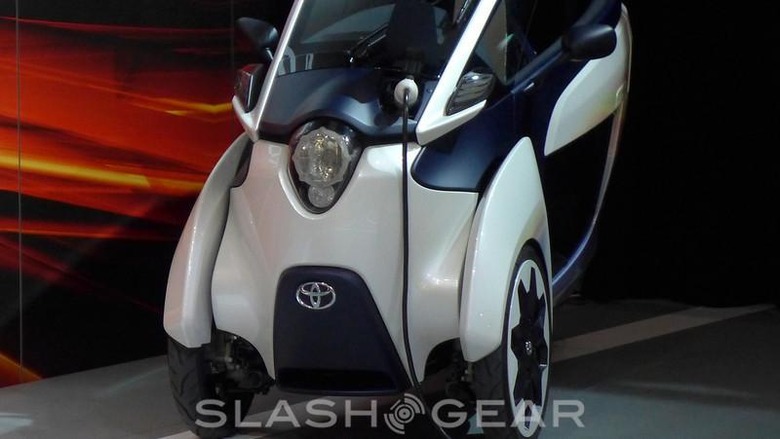
The interior of the i-Road has a front and single-rear seat and, given this is a closed environment, the driver isn't required to wear a helmet. The i-Road also has interior lighting and heating as well as an audio system and Bluetooth for connecting a phone. Another perk over a motorcycle or scooter comes in with that closed setup and not having to worry about rain or other foul weather, something the big panel gaps in Renault's similarly-electric Twizy left us at the mercy of.
SlashGear editor-in-chief Vincent Nguyen was able to drive the i-Road at a private event in Tokyo shortly after the original announcement; you can see his test-drive video below, including some tilting driving footage from Google's Glass. It also demonstrates that, while the i-Road is a smaller compact vehicle, it is able to accommodate a taller driver. The other takeaway here is the bit about how easy this is to get in and drive — what you are seeing is quite literally the first drive experience, with Vincent simply climbing in, hitting "Drive" on the push-button transmission and setting off.
Unfortunately, while the i-Road has obvious appeal as a city car, Toyota is taking a conservative approach to the concept. Trials in car-sharing schemes are set to take place in Japan as well as France, but no private sales and Toyota isn't saying how much the i-Road could cost if that were ever to change.

